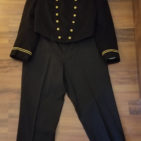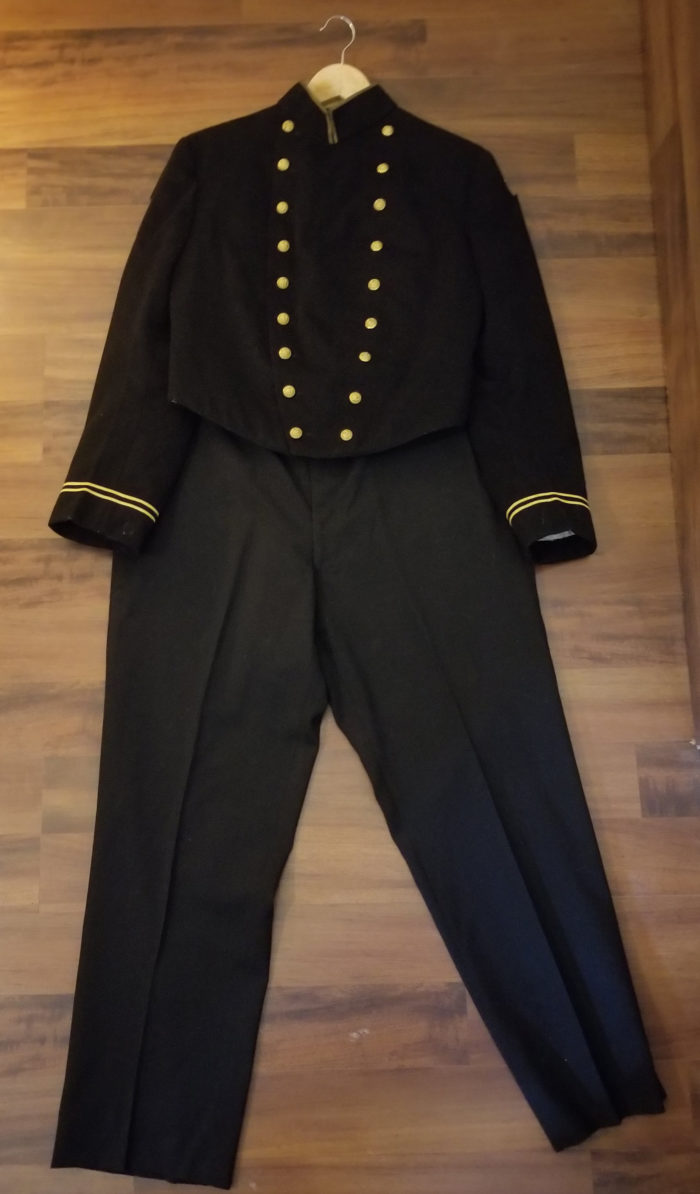The American Mayor of Saigon
Archie Kuntze’s Early Uniform Jacket & Pants
1939 Blue Dress from U.S. Naval Academy in Annapolis
US NAVY NAVAL ACADEMY ANNAPOLIS SERVICE DRESS BLUE COAT MIDSHIPMAN
One of a kind, unique story Jacket!
Archie’s 1939 US Naval Academy Uniform Jacket & Pants
LEARN MORE ABOUT ARCHIE... photo - https://outlet.historicimages.com/products/rse72503 http://lde421.blogspot.com/2012/04/rise-and-fall-of-american-mayor-of.html
The American Mayor of Saigon
9/7/2017 • VIETNAM MAGAZINE
In the spring of 1938 the sons of Sheboygan,Wisconsin,dreamed far more practical dreams than had their parents. That year’s Sheboygan High School graduates had lived half of their lives in the depths of the Great Depression. Listing their ambitions above their photographs in the school yearbook,the seniors most commonly wrote of employment such as “commercial work,” “librarian,” “clerk in book store.” Archie C. Kuntze had a bigger dream: “Naval Officer.”
Twenty-six years later, the boy with soft rounded features, sparkling dark eyes and a big smile was Captain Archie Kuntze, U.S. Navy, one of the most powerful men in South Vietnam, where he was known as “The American Mayor of Saigon” and in line for promotion to admiral.
After high school graduation, Kuntze won an appointment to the U.S. Naval Academy. His class of 1942 was fast-tracked after the Japanese attack on Pearl Harbor, and the 546 graduates were commissioned in December 1941. Kuntze landed on a destroyer-minesweeper in the South Pacific, participating in the campaign to take back the Solomon Islands from the Japanese and then seeing combat at Guadalcanal, the first and third battles of Savo Island, New Georgia and Bougainville. On April 16, 1945, his ship, destroyer Harding, was hit by kamikazes. Fourteen crewmen were killed, eight reported missing and nine wounded, including Kuntze. After recovering in Hawaii, Kuntze returned to Harding as second in command.
After Japan surrendered, Kuntze stayed in the Navy, and when the Korean conflict began in June 1950 he was given command of an attack transport ship, USS Begor. Under Kuntze, Begor landed South Korean and American guerrillas and demolition teams behind enemy lines. And when the Chinese attacked American forces in late 1950, Begor transported explosives to the North Korean port of Hungnam.
With the end of hostilities in Korea in the summer of 1953, Kuntze became an executive officer at the Naval Academy and then served as a planning officer in the Amphibious Training Command for the Pacific Fleet.In October 1957,he was given command of the destroyer Laws,and nine months later assumed command of the Destroyer Escort Division 12.In 1959 he became a placement officer with the Bureau of Naval Personnel until his return to sea as the commander of Mine Squadron 7 in November 1962. By that time he had received 22 military decorations.
In 1963 Kuntze enrolled at Harvard and completed a course of study in advanced management in the spring of 1964. A few weeks later he was given command of the U.S. Navy Headquarters Support Activity Saigon (HSAS) to supervise the U.S. buildup for the rapidly growing conflict in Vietnam.
The assignment would be the high point of his career— and end as the low point in his life. Without realizing it, in Saigon in 1964 Kuntze stepped onto the stage and into the lead role in a real-life updated version of Madame Butterfly. But it was Puccini’s opera in reverse, with the tragic broken figure being not the Asian beauty, but rather the American Naval officer.




